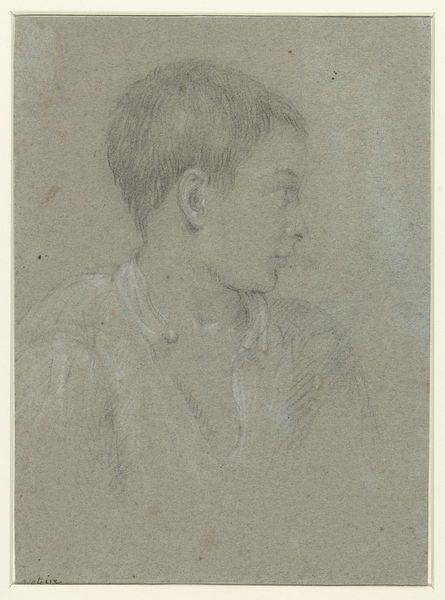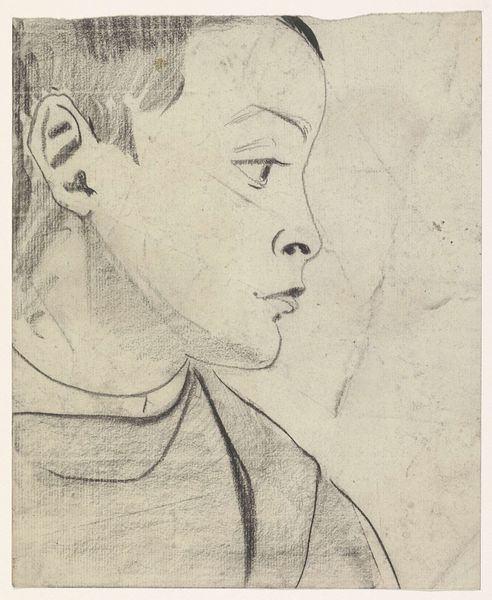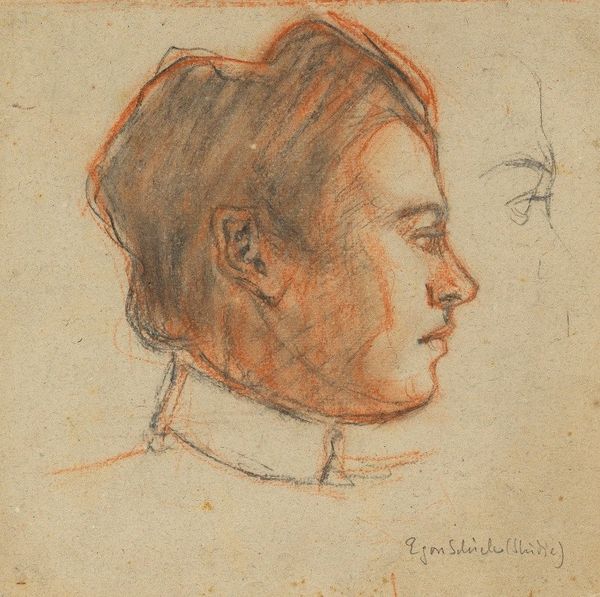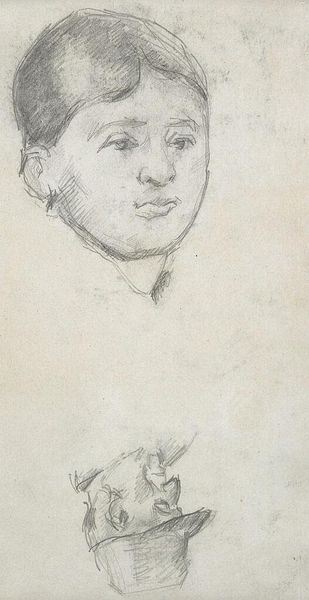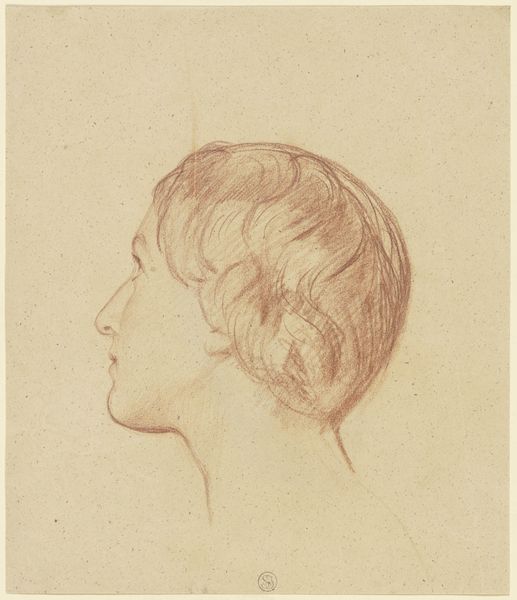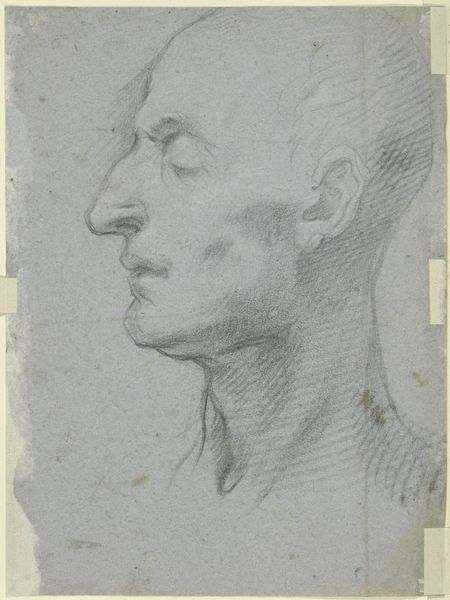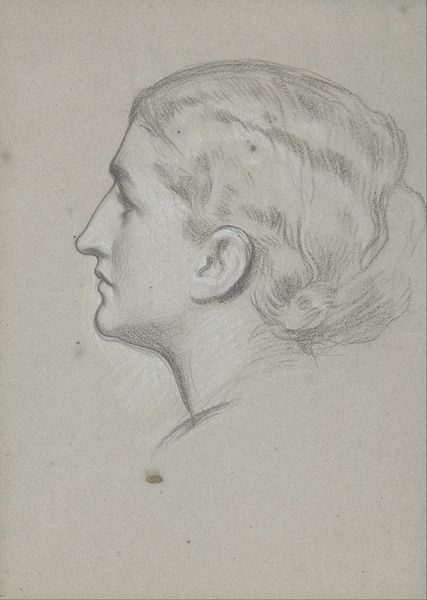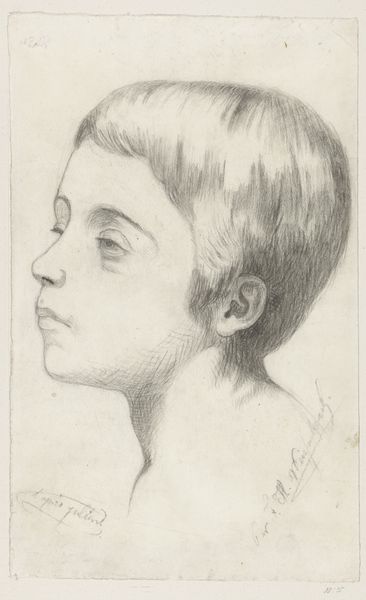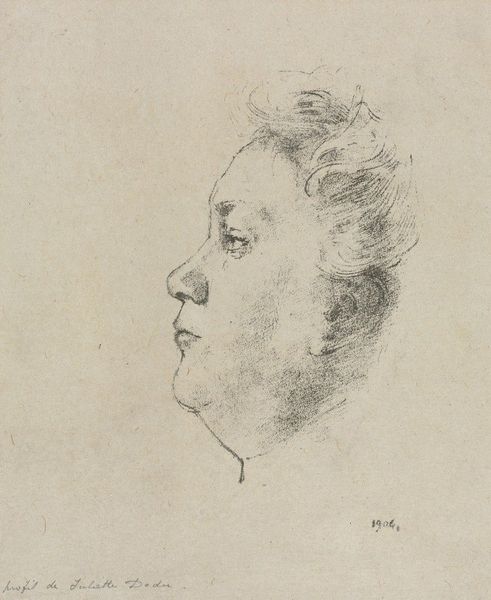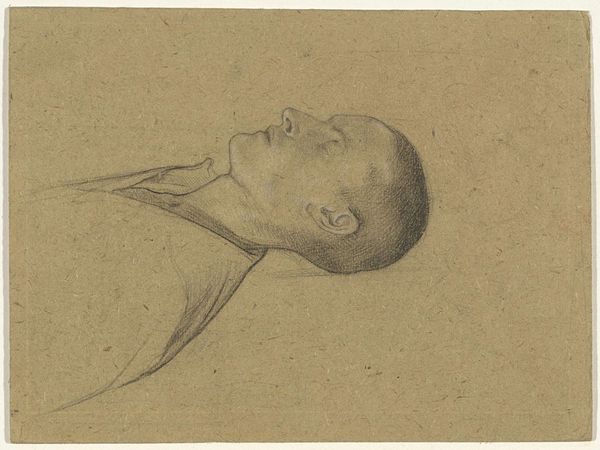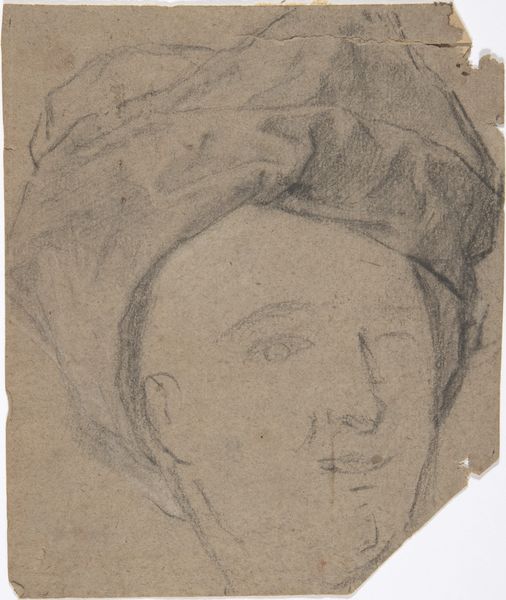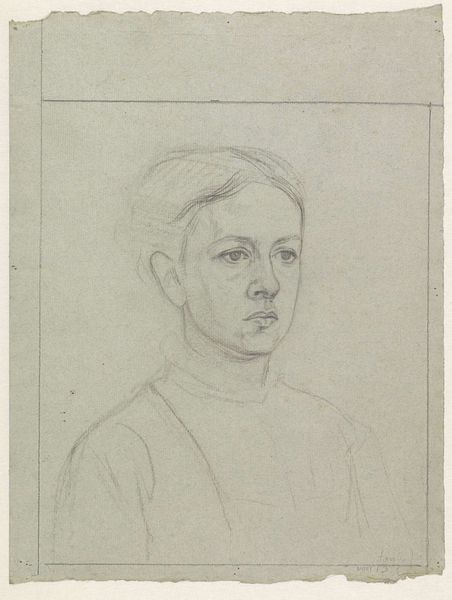
drawing, pencil
#
portrait
#
drawing
#
figuration
#
pencil drawing
#
pencil
#
italian-renaissance
#
realism
Dimensions: height 273 mm, width 220 mm
Copyright: Rijks Museum: Open Domain
Curator: This delicate rendering, dating to around 1604, is entitled "Head of a Boy Wearing a Cap, in Profile to the Right" by Ludovico Carracci. It’s a pencil drawing currently held at the Rijksmuseum. Editor: My first impression is one of quiet contemplation. The subject's gaze, though directed outwards, seems to hint at an interior world, perhaps shaped by the societal roles he's soon to inherit. Curator: Absolutely. Carracci masterfully uses the subtle gradations of pencil to model the planes of the boy's face. The lines defining the cap, for example, demonstrate a control that belies its seemingly simple form. Consider the way the light falls and defines his features; the artist is really at ease with capturing details, the folds around the neck are especially refined. Editor: Precisely! The cap itself is intriguing. In a historical context, head coverings denoted societal class and/or religious status. What do you suppose is the impact here? Could this garment imply a certain apprenticeship, servitude, or maybe merely some kind of studio practice where all of his subjects had to wear them? Curator: I lean more toward it being a studio item; these works tend to come out of academic settings where artists practiced drawing various models, honing their craft and achieving realism. Carracci and his academy were deeply involved with Renaissance artistic conventions. But as to what all that might say about social or cultural themes within this image... Well, I simply consider such contextual readings to be an extraneous analysis when you're already face-to-face with such well-observed mastery of pure form. Editor: Yet is form ever truly pure? It’s all mediated by social context, cultural expectations. The way Carracci renders this boy – the soft, almost vulnerable expression - surely suggests a sensitivity to his subject's humanity, one inevitably framed by the expectations placed upon young men of that era. It goes to what that pencil in the artist’s hand really stands for in his society. Curator: A good point! However, to push back a little bit, I feel it more probably simply points to his immense facility in rendering such expression, regardless of whether there’s something symbolic that is meant to speak to viewers. It’s like the Old Masters believed expression was merely another technique to master, not so much a vessel that communicates all types of newfangled, progressive meanings… Editor: All the same, though, this piece really underscores the importance of how we use both historical inquiry and attentive observations of art. Curator: Agreed. By considering the image’s formal qualities alongside its potential contextual frameworks, a fuller understanding can indeed come to be achieved.
Comments
No comments
Be the first to comment and join the conversation on the ultimate creative platform.
